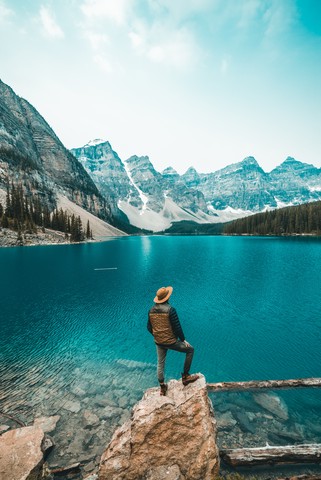Mljet Island
Its most popular cave is the Odyssey’s Cave which you can reach by taking a short boat ride inside the park.
Mljet National Park Croatia: Top Things To Do, Attractions and Getting There

Would you like to witness the beauty of untouched nature? That is what you will experience when you visit Mljet National Park.
Please enable JavaScript
It is one of the 8 major national parks in Croatia and one that offers quite a unique attraction.
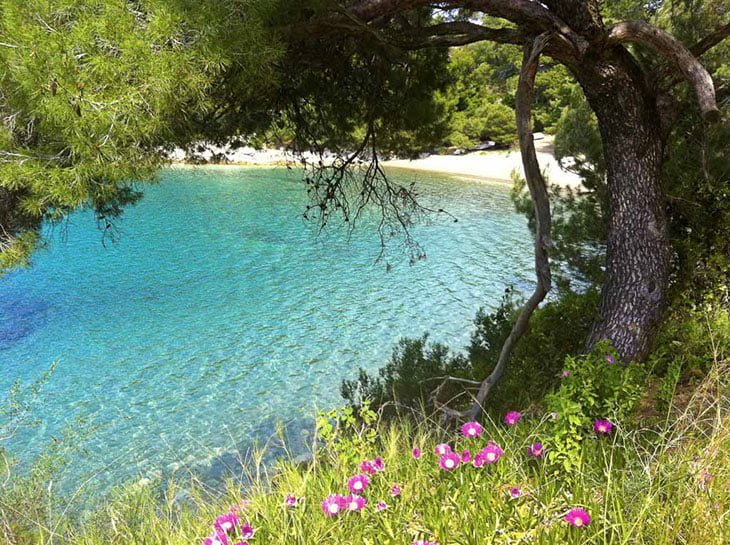
Each of the 8 parks have their own special features but Mljet National Park is quite extraordinary mainly because it is bordering on 2 saltwater lakes.
This location alone allows for activities that will be very different from what you will find in all the other parks. The park is officially a protected natural sanctuary because of this.
Mljet Island national park is in one of the largest islands in Dalmatia founded in 1960. Thousands of people visit this scenic park every year.
The area is exposed to sea and surf.
Picture a sweet spot of land in between two bodies of crystal clear blue waters.
What a day trip it would be!
Far from world cultural affairs, spending even a brief amount of time in this island would leave you feeling refreshed and ready to face whatever is ahead of you.
Mljet National Park has been declared a protected territory in order to preserve its unusual features.
Where is National Park Mljet?
Mljet National Park is located in the island of Mljet near other groups of islands in southern Dalmatia.
The nearest city to the island is Dubrovnik so it would be easy to hop over to the park if Dubrovnik is your main destination.
Day trips are also available from Dubrovnik to the island and back again.
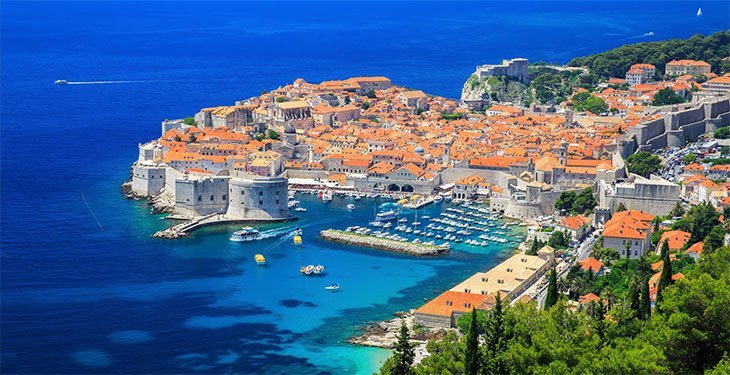
You can reach Mljet National Park by ferry from any of its nearby cities.
There are numerous charter boats available coming from Split, Island Of Hvar, and Korčula island among others.
The national park covers the western part of the island as well as the two lakes and the Soline Bay.
The small lake is called the Malo Jezero and the big lake is called the Veliko Jezero, both names are their literal translation in Croatian.
There are plenty of things to see and to do at the park, including the Benedictine monastery in the middle of a small islet.
You can hike, walk, stroll, and even bike around its many trails.
Other popular activities in Mljet National Park Croatia include kayaking and swimming.
The Big Picture: Places To Visit In Mljet National Park
This national park is the oldest marine protected area in the Mediterranean and thousands of visitors both foreign and local flock to the island to marvel at its fascinating natural beauty.
It is said that in this park, you will truly see the colors and the scent of untouched nature.
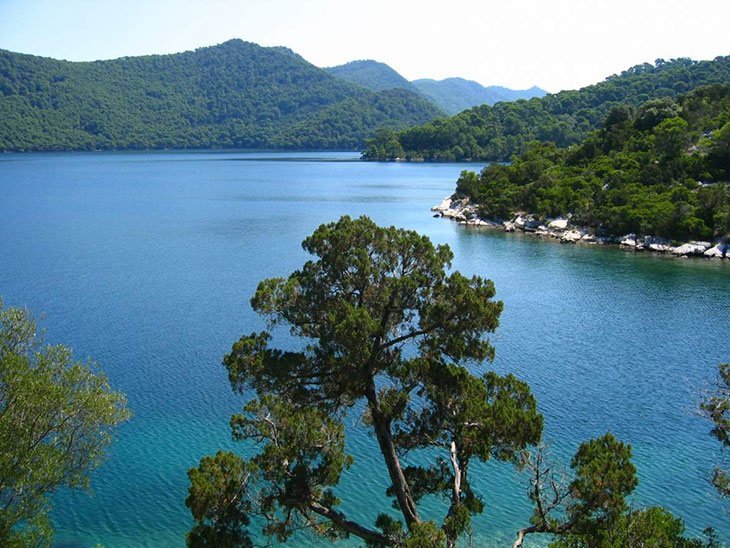
The island Mljet first gained its protected status in 1948 and on November 11, 1960, it was proclaimed a national park.
Mljet Island National Park covers an area of about 5,400 hectares including the surrounding marine as well as the islands and cliffs.
That means about one-third of the island comprises the park.
It’s a huge place so it is really advisable to take the whole day to explore the park, instead of mixing it up with other destinations in your day tour.
The two bays or lakes in between this island, which is included in the park’s area, are deep and filled with seawater.
They are popular destinations.
But more importantly, these two lakes are quite a mind-blowing geological and oceanographical phenomenon!
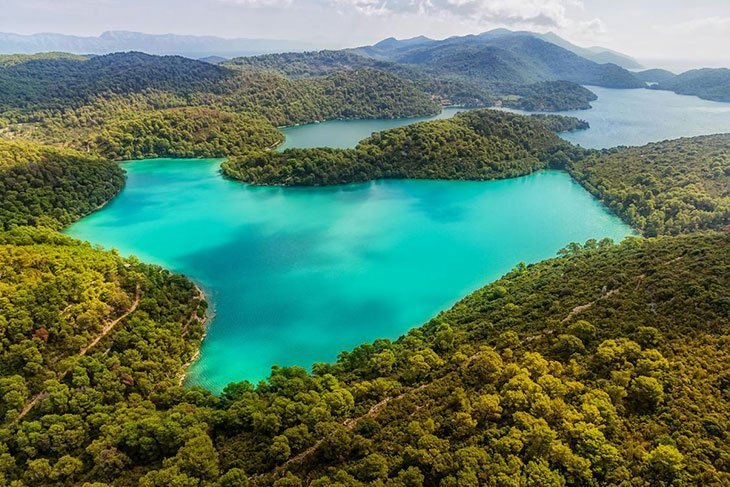
The park’s entire area is abounding with life and numerous endemic and endangered species.
This is evidence that Mljet National Park should really be under national protection.
Nature lovers will fall in love with its panoramic views and people who love learning about cultural heritage will also find lots of things to treasure in this island.
There are numerous archeological sites to marvel at which tell stories of the island’s settlers’ ancestors many years ago.
One of the most beautiful attractions inside the park is the Benedictine Monastery which is located in what could be the most scenic spot in the entire island.
You will not run out of activities to do in national park Mljet Croatia. Among these are walking or cycling.
Both are great ways to explore the island in your own pace, giving you the freedom to stop by anywhere you want at any time.
If you visit during the summer season, you should definitely take the opportunity to take a swim or scuba dive in the crystalline waters.
The island also features lots of caves that have been naturally formed along with ground erosions.
Its most popular cave is the Odyssey’s Cave which you can reach by taking a short boat ride inside the park.
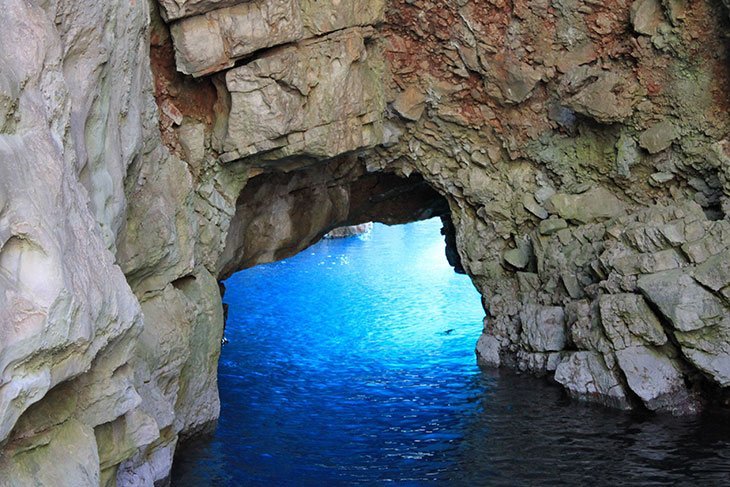
You can rent a canoe or a kayak and spend your afternoon paddling around the lakes. Just take note that the rental for such equipment are not included in the park’s entrance fees.
You could also pay a visit to the villages around the area.
There is the picturesque town of Govedari which is the first settlement in the island back in the 18th century and the Polače village which also has an interesting albeit turbulent history.
Pomona is another village to visit especially if you would like to shop for souvenir items.
Mljet Island Lakes
What is so special about the two lakes in between this island that make the park so unique and intriguing?
As mentioned, Mljet National Park is in between two saltwater lakes.
The Veliko Jezero or large lake and the Malo Jezero or small lake.
Both lakes stretch about 4 kilometers and in the middle of the two is the islet Melita where you will find the Benedictine monastery.
The lakes used to be ordinary freshwater lakes but because of the narrow channel through Soline Bay, the lakes have been connected to the sea, transforming them into saltwater lakes.
This is a unique geological and oceanographical phenomenon and one that is of significance to the whole world.
These lakes, along with the Soline Bay are the heart of Mljet National Park.
Veliko Jezero (Big Lake)
The big lake or what locals call the Veliko Jezero is actually a sea bay, originally formed because of the sunken karst coves.
You can enter this lake by sailing via Soline through a small and narrow passageway.
It is very likely that it was the Benedictines who artificially created the dredge the area to allow access to the islet during the 15th century.
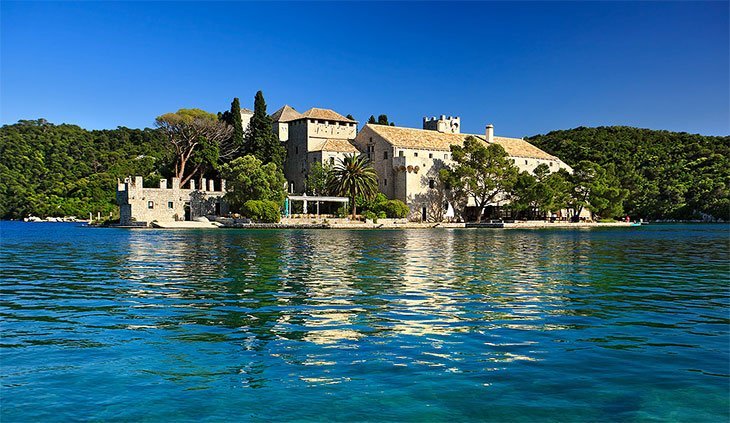
When the currents started getting stronger in the lake, with sea water washing over the channel, it affected the direction in sequences of the tides.
The Benedictine monks, smart as they are, immediately took advantage of the natural phenomenon by setting up a mill on the shore of the channel.
It is also possible that the small bridge was built around the same time.
However, the monastery eventually abandoned and by 1960, it was rebuilt into a hotel and the old mill was also destroyed.
What’s unique about this lake is that it has salty waters because it is connected to the Adriatic through the Solinski Channel.
Furthermore, there are no other outlets to the sea so the water in the Veliko Jezero does not get replaced much which makes its salinity lower than that of the sea.
That is why the lake’s water is warmer in the summer and colder in winter than the seawater’s temperature.
That is how it is different from other freshwater lakes.
The Veliko Jezero is also rich in various forms of aquatic life.
Beneath the surface, you will find grey mullets, sea bass, moray eel, scorpion fish and those are just a few examples because there are so much more!
Malo Jezero (Small Lake)
It used to be that these two lakes are connected by a channel but it was so shallow that people could not wade across.
Before World War II, while the road around the large lake is being built, they dredged a wider passage to allow small boats to pass through.
So now, you can see them as two separate lakes. At the same time, they also built a bridge called the Small Stone Bridge to allow passage on land in between the two.

The water from the small lake or Malo Jezero comes from rainwater as well as underground stream.
Its water is even hotter in the summer than the Veliko lake and a lot colder in winter than both the open sea and the big lake.
It has a much lower salinity than that of the sea but it increases going down the sea bed.
Some experts believe that there must be a direct underground connection between the small lake and the sea.
Is swimming allowed in Mljet lakes?
Because of the protected status of the Mljet National Park, it is worth mentioning that visitors are allowed to swim in the lakes.
Some parks in Croatia that are considered as protected sites such as Plitvice National Park, prohibit visitors from swimming in the waters.
At Mljet National Park, you are free to swim, sail, or kayak during permissible hours.
So, make sure to bring your swimsuits along.
However, keep in mind that people are working very hard to preserve the park’s natural beauty so please respect this and try not to cause any damage or contribute to water pollution.
Things To Do On Mljet Island
A day inside the Mljet National Park means a fun-filled day basking in the beauty of nature and plenty of underwater adventure opportunities.
There is so much to see and do so it is really best if you spend the whole day at the park to make the most of your efforts going there.
Walking and Biking
The two most popular activities in Mljet National Park are walking and biking.
You can either walk or bike on your own or join some of the walking and biking tours.
There are several walking and biking trails along the shores of the lakes and some wound in through the forests.
These tarmac and gravel roads are suitable for all types of biking.

You can bring your own bike or you can rent form the park.
Depending on where and how you purchase your tickets, some entrance fees already include the bike rental as well as some boat rides.
Walking and biking inside this extraordinary island will let you experience seeing the park in an utterly unique perspective.
It is like going inside a history book and really exploring the place as though you went back in time.
Hiking Trails On Mljet Island
Mljet National Park is also a great spot to hike. There are numerous hiking trails that stretch out all over the park.
Just be aware that park authorities have indicated borders that limit visitors to specific areas of sightseeing so do not go beyond those borders in an effort to help preserve the island’s natural beauty.
The hills go up to 200m and the peaks are a great spot to take in the stunning scenery of the Mljet island coastline.
Swimming, Kayaking, and Canoeing On Mljet Croatia
You can enjoy the waters in these saltwater lakes as much as you want in many different ways.
It is an extraordinary lake so why not take a dip?
Bring your swimsuits and your sunscreen because you will not want to get out of the water once you’re in.
It is seawater but it is so clear and mesmerizing that you almost want to drink it, but of course, don’t!
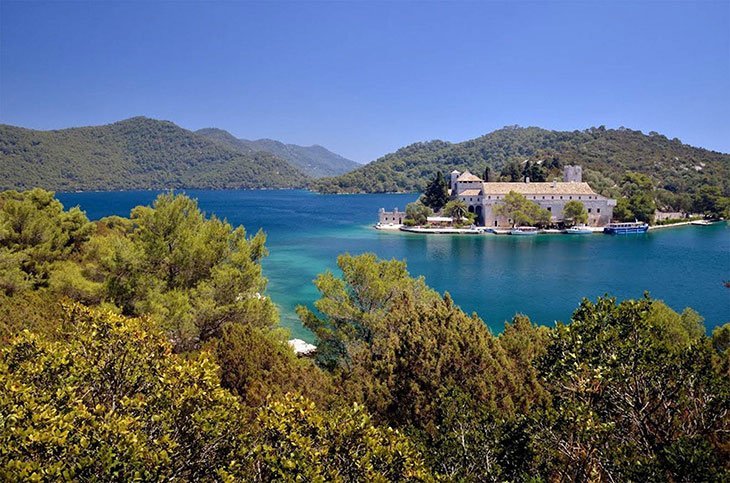
You can rent a kayak or a canoe at Mali Most which is where the big lake and the small lake meet, joined by a narrow channel.
Kayaking will also allow you to fish for fun around the lakes.
Or you can simply just paddle around while enjoying the sights. Life jackets and spray skirt are included in the kayak rental.
Island of St. Mary in Big Lake
In the big lake, you can sail toward the little isle of St. Mary in the southern part of the lake where the Benedictine monastery is located.
The Church of St. Mary is also in proximity.
There is a path from the main park going to the big lake so it is easily walkable then ride a boat to get to the islet.
The monastery has quite an interesting history. It was built between 1177 and 1198, initially by the Benedictines but was later rebuilt by the church.
The structure has undergone many changes in style and appearance throughout the centuries.
It took on a Renaissance style then Baroque but it mostly remained Romanesque in style.

The Church of St. Mary is part of the monastery which is a single nave Romanesque building.
Its interior was partitioned and extended at the same time of the installation of the coat of arms of Gundulić family on the porch.
Even after that, the monastery kept undergoing several changes.
Today, the monastery is a Romanesque structure with two levels decorated by pretty courtyards on both sides.
You should also go see the defensive tower toward the southeast side.
Climbing on top of it is a one-of-a-kind experience and you will be able to see a picturesque view of the great lake.
For a long time, it was the Benedictines who took responsibility of caring for the island, living in harmony with nature.
But they renounced their rule over some parts of the island in 1345 and that was when Mljet Croatia obtained a statute municipality.
Nevertheless, the Benedictines continued their activities through 1809 until it was closed when Napoleon came to power.
From then, the islet was handed to many different owners and the monastery was eventually neglected. It was converted into a hotel which remained in operation until 1991.
Then going forward to 1998, it was given back to the diocese of Dubrovnik and to this day, renovations are ongoing for the abandoned monastery.
Unlike other religious structures in Croatia, you will not see a lot of artifacts in the monastery but it is quite a sight because of the rich history throbbing in its walls.
There is no museum.
What you will see are old passageways that have gone through various redesigning, giving you a look of how the monks had lived within those walls back in the day.
Odysseus Cave On Mljet
Caves have naturally formed around the lakes over the years and one of the most amazing of these is the Odysseus Cave on the southern coast of the island.
The cave is famous for its egg shape and the rock formations inside are a really thrilling view.
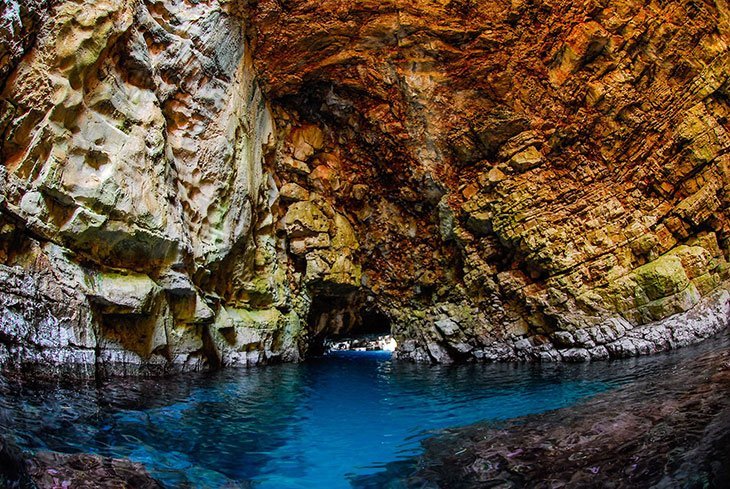
It was named after the legendary Odysseus.
They said he was shipwrecked near the cave and had to find shelter in the nearby lands.
He was swept away to the cave and was forced to stay in there for quite some time, either trying to escape the nymph Calypso who was seeking him or as a slave kept captive in the cave.
Later on, people eventually attributed this legend to the island of Malta.
According to the Greek poet, Homer, the nymph Calypso was Odysseus’ lover for seven years but he was a prisoner in the cave.
The cave is wide with a collapsed vault and to go in, you would have to swim through seawater.
You can enter it from the sea either by swimming or sailing by boat since small boats can pass through its wide opening.
You can simply look at it from its entrance or you can traverse the tunnel inside which is about 20 meters long. The sea is some 10 meters deep.
If you look at the island from the air, the cave looks like a big hole in the ground.
Layers of limestone separate the cave from the open sea waters.
If you enter and walk all the way to the end of the tunnel, you can either go back to the water or climb back up to land on a very steep and improvised stairs.
During the summer, it is best to go to the cave around noon because the light from the sun gives out a colorful glimmer in the sea.
It is an extraordinary natural phenomenon that is worthy of a professional photograph.
Sailing On Mljet Island
Another way to reach Mljet island and take a day tour there is by arriving on a sailboat or a yacht.
You can drop anchor in one of three nearby villages either in Polače, Pomena, or Lokva bay.
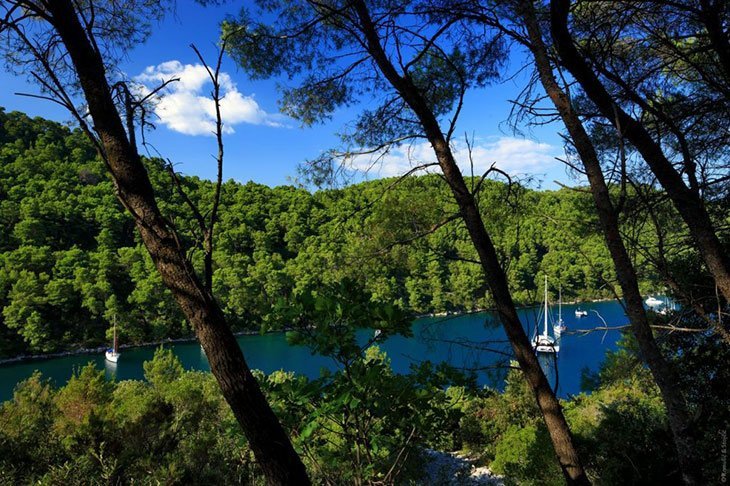
Villages On Mljet Island
Sometimes, visitors would begin their exploration of the Mljet National Park from one of the villages.
From there, they would sail through the lakes and then stop at Mljet island.
Polače
The Polače village is a settlement and harbor in the protected bay which features a number of cultural and historical structures.
Sailing to the village is a great segue in between your water activities and treks in the park.
It has a Roman palace and an ancient basilica that tell lots of stories about the village’s history.
The village has a small port in the gulf, somehow hidden behind the islands.
It’s also a great place to dine and shop since you would not find many shopping places in the park.
You can get souvenirs and even rent a place to stay for the night if you want to extend your visit to Mljet National Park.
The Mljet national park has an office in Polače where you can buy tickets and take cash from the ATM.
Pomena
You can continue your sea explorations and sports activities in Pomena village.
Here, you will find various sports fields along with diving and sailing schools.
It’s a small town and its main street is a shopping area where you will also find lots of good restaurants. You can also rent bikes and canoes.
Govedari
Aside from those two towns, you can also visit Govedari which rises on a slope of fertile fields in the island.
This village is the first settlement in Mljet that was permitted by the Benedictines to build houses and structures in the area.
Its history begins in the 18th century and its first settlers were known as shepherds and farmers which gave them the town’s name “goveda” meaning cattle in Croatian.
The village is a protected land so no one is allowed to build new houses anymore and the existing ones are not allowed to be sold.
Mljet Cultural Summer
During the summer which is the peak season, the locals celebrate a religious holiday of the Great Madonna, known to them as Velika Gospa.
Festivities start from mid July all through the 15th of August. It will be a great time to go to the islet of St. Mary to catch various concerts.
There will also be exhibitions inside the monastery during this time and all proceeds go to the reconstruction of the monastery.
Half Ironman Triathlon – Mljet Island
A traditional annual race happens in the island of Mljet during the month of October.
It is a triathlon that involves swimming, cycling, and running. It starts and ends in the most beautiful parts of the Mljet National Park.
Exploring Mljet Island
If you don’t feel like walking or riding a bike, you can take the bus that passes through all the villages in the island.
You can visit the above featured towns, Pomena, Polače, and Govedari in this way along with other towns if you are interested in them.
The park’s admin provides the mini bus as well as the boat for guests to reach the island of St. Mary.
Getting to Mljet Croatia
Mljet National Park is occupies a big part of the Mljet island. It is near Dubrovnik and you can easily get to it via a ferry boat.
The island is a part of a group of other isles in the southern part of Dalmatia toward the northwest.
Aside from Dubrovnik, you can reach Mljet National Park by taking a ferry from numerous tourist charter boats in cities like Split, Korcula, and Island Of Hvar.
These ferry rides dock their vehicles either at Pomena or Polače port.
Some people take boat rides to Sobra which is Mljet island’s main port but you would need to drive to get to Mljet National Park.
There are three official entrances to the park.
You can choose to enter from Crna Klada, Pomena, or Polače.
The fees will be the same and you can access all of the attractions in the island from any of the entrances.
If you enter from Pomena or Polače, you can walk to the main park through a system of forest paths.
Those who are part of a group tour take a particular route to tour the island.
If you and your group are not part of an organized tour, you can explore the island however you wish as you long as you comply with the park’s regulations.
Here are more details on getting to the island.
By Boat or Ferry from Dubrovnik
Mljet National Park is located in Mljet island and one of the best ways to reach it is by riding a boat or a ferry from the nearby cities.
If your main destination in your Croatia trip is Dubrovnik, then you are very lucky because there is a direct ferry ride to the park from the city as detailed above.
Other cities also offer boat rides going to Mljet National Park.
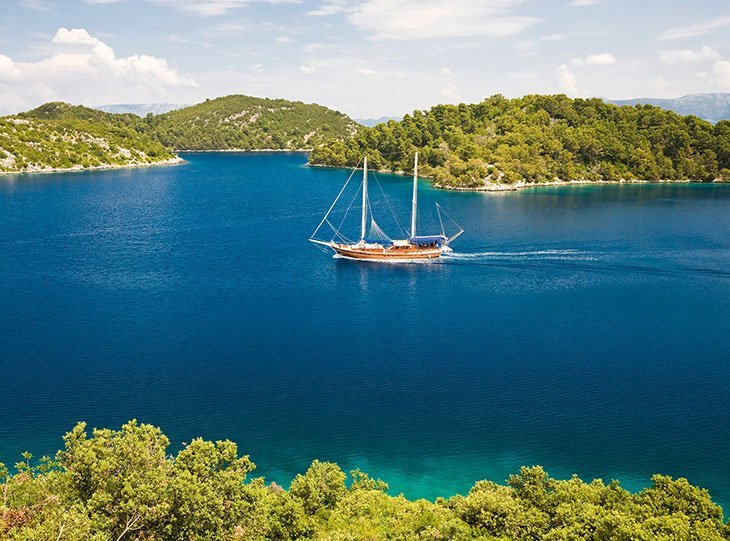
There are three boat lines going to Mljet islands.
One is the Catamaran line which comes from Dubrovnik.
There is a ferry from Prapratno located at the Pelješac peninsula going to Sobra.
Trips are only available 4 times a day so make sure to check their schedule.
From Sobra, you would have to take a car or ride a taxi going to Mljet National Park.
By Boat Or Ferry From Split
There is another Catamaran boat line coming from Split.
When taking these boat rides, be careful to read all the details in your ticket because it will indicate the meeting places or the port where your boat or ferry will be.
Arrive early because if you miss your boat ride, it will be difficult to get to the next one especially since they run on a strict schedule.
Going to Mljet by car
Going to Mljet National Park is also an option though you will eventually have to leave it somewhere to get to the park’s entrance.
None of the sea vessels going to Mljet National Park can carry cars so you either drive to a nearby location or ride a boat.
Either way, you would end up leaving your car in one of the parking spaces or public garages for a fee then ultimately taking a ferry going to the island.
A day parking ticket in Dubrovnik’s Gruž ferry port costs 100 kn.
Entrance Fees To Mljet National Park
Entrance tickets to Mljet National Park vary depending on the season. There are no discounts for groups but students get a discounted rate.
From January 1st to June 14th
Tickets to Mljet National Park for individuals and groups cost 90 kn per person.
Children from age 7 and above as well as students and Croatian citizen pensioners pay a discounted rate of 50 kn.
Children from age 6 and below are always free to enter.
From June 15th to September 15th (Peak Season)
Tickets to Mljet National Park for individuals and groups cost 100 kn per person.
Children from age 7 and above as well as students and Croatian citizen pensioners still pay a discounted rate of 50 kn.
Children from age 6 and below are always free to enter.
From September 16th to December 31st
Prices go down again after the peak season:
Tickets to Mljet National Park for individuals and groups cost 90 kn per person.
Children from age 7 and above as well as students and Croatian citizen pensioners pay a discounted rate of 50 kn.
Children from age 6 and below are always free to enter.
All guided tours cost 400 kn and lasts up to 2 hours.
Remember that entrance fees to the park are not inclusive of rental fees for boats and kayaks as well as other boating gears that you may need.
Tickets to the ferry ride from other cities going to the island may or may not include the entrance fee to the Mljet National Park so always confirm what is included in your package and tour.
Best Time To Visit Mljet Island
The Mljet island, the two saltwater lakes, and the park itself are all spectacular throughout the year.
Summer is the most popular time to visit because you can maximize all the activities in the water like swimming, kayaking or canoeing. You can also scuba dive in the lakes.

Festivities also happen during the summer so it’s one of the things that are great to observe.
However, take note that the sun can get very hot and that the water is hotter than the open seas so just be cautious and take necessary precautions such as putting sunscreen.
The island will be more crowded in the peak season but it will not be as packed as the other more popular destinations in Croatia like Dubrovnik or Plitvice Lakes so it is still quite manageable.
The best time to visit would depend on what you want to see and the activities that you want to do.
If you don’t want to miss out on observing the lakes’ underwater life, it is best that you plan your visit in the summer.
But even in the winter, walking along the shores are just as relaxing and you will still be able to see this island’s spectacular beauty.
If you want to witness the mini Ironman triathlon or maybe even join it, you should plan your trip in October.
Travelling to Mljet National Park With Children
Mljet National Park is a suitable destination for families traveling with children.
There is not much traffic along the paths and passageways to the great lake and the shores as well as other flat areas by the sea are safe to explore with your little ones.
Check Other Croatia National Parks
- Travel Guide For Krka National Park
- National Park Plitvice Lakes Croatia
- Things To Do In Paklenica National Park
- Best Things To Do In Risnjak Croatia
- Travel Guide For Kornati Islands National Park
- Brijuni National Park Travel Guide
- Northern Velebit National Park
Check Nearby Holiday Destination
- Visiting Split Croatia
- Best Things To Do On Lastovo Croatia
- Top Things To Do In Korčula Croatia
- Dubrovnik Croatia: Best Things To Do, Attractions
- Best Beaches In Dubrovnik – Croatia
- Best Beaches In Croatia
- Great Things To Do In Makarska
- Brela Croatia: Top Things To Do, Beaches and Attractions
Mljet Island
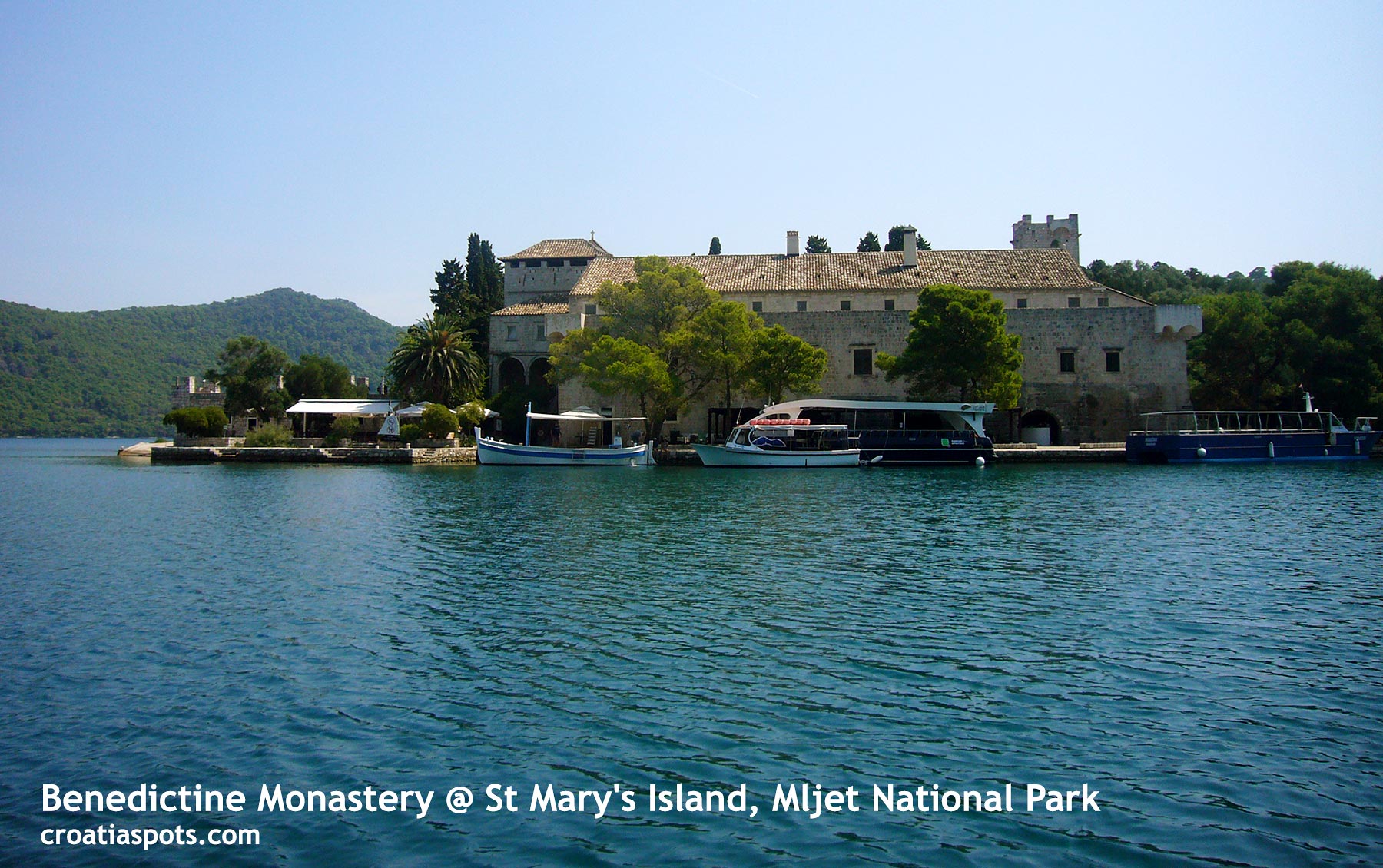
Mljet island is one of the Croatian islands that is also a National Park. Historically considered as one of Dubrovnik’s islands (beside Elafiti Archipelago), Mljet is situated 14.5 nautical miles from Dubrovnik (about 27 kilometers).
The island has just over a thousand permanent inhabitants. Conveniently connected by daily ferry boat lines with Dubrovnik and daily car ferry crossing to the Croatian mainland (Prapratno@ Peljesac), Mljet is one of the most popular islands to visit while holidaying in the Dubrovnik region.
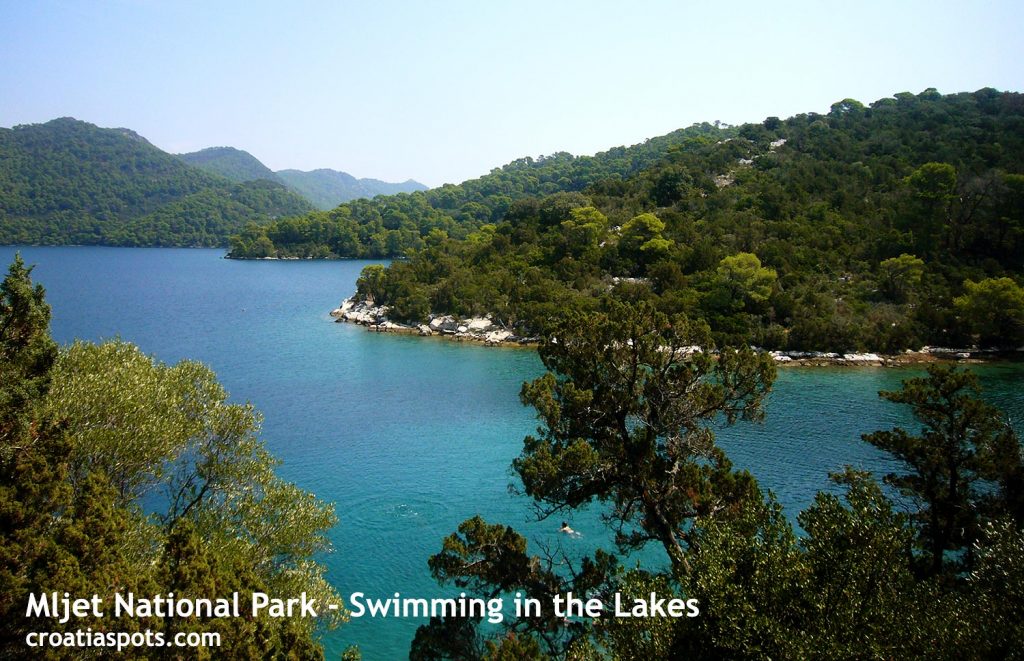
Table of Contents
When to Go
The best time of the year to visit Mljet is in May and June and September and October. These are the months that are less crowded as opposed to July and August when the island gets busy with people on the summer holidays. The weather is milder than in July and August (when heath can rise up to 40°C) which is suitable for any outdoor activity including open water swimming, hiking, cycling, and snorkeling. The average sea temperatures are above 20 °C, still great for swimming, especially within the salted lakes.
Weather in Mljet
Weather in Mljet is very similar to the weather in other south Dalmatian islands, meaning spring and autumns are milder (temperatures up to 20 C) while summers (July and August) are hot with temperatures up to 40 C.
Winter, early spring, and late autumn (November to March) can get pretty cold here, due to the chilly Bura wind that is typical for the area. All villages inside and away from the coast are well sheltered from Bura, although the average temperatures are lower and you do need some form of heating.
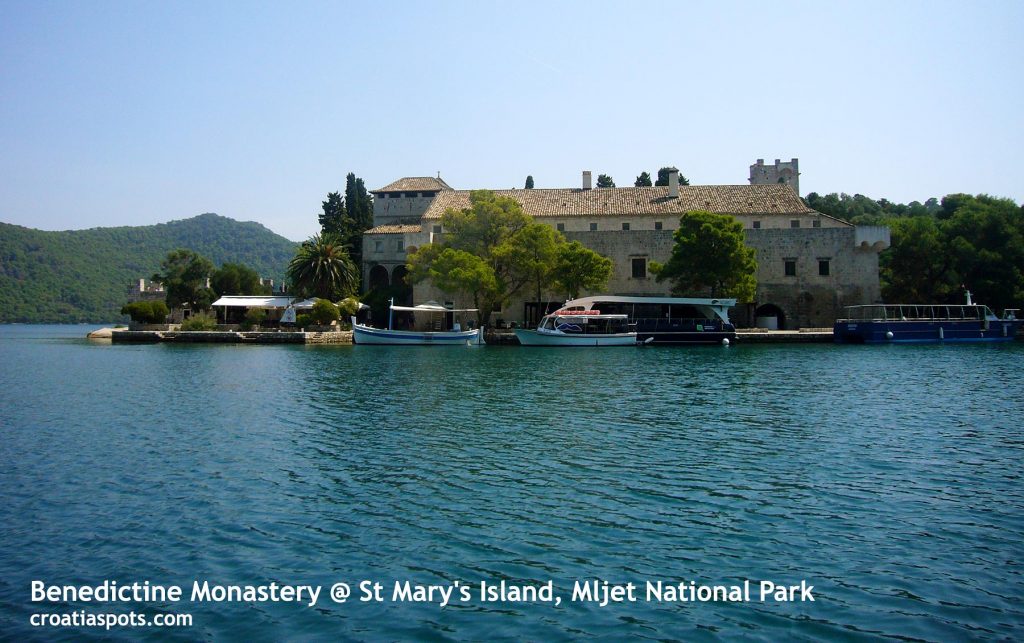
How Long Should You Visit
Mljet, with its two stunning lakes, considered as one among the Adriatic’s most beautiful islands, is an ideal island to visit for at least a day trip from Dubrovnik. It is just 1 hr 20 minutes by fast catamaran ferry from the town. I would say that the minimum visit is at least 1 whole day. Two days (48 hrs) are ideal.
Overnight on the island and see all the attractions (St.Mary’s Benedictine Monastery, Polače Palace, and Saplunara Beach) with enough time to swim in some of the best beaches and do some hiking or cycling around.
A week or longer is fine for people who are looking for a slow holiday with plenty of outdoor opportunities in an amazing natural environment. So, you’ll need a day, two, or three to do it justice.
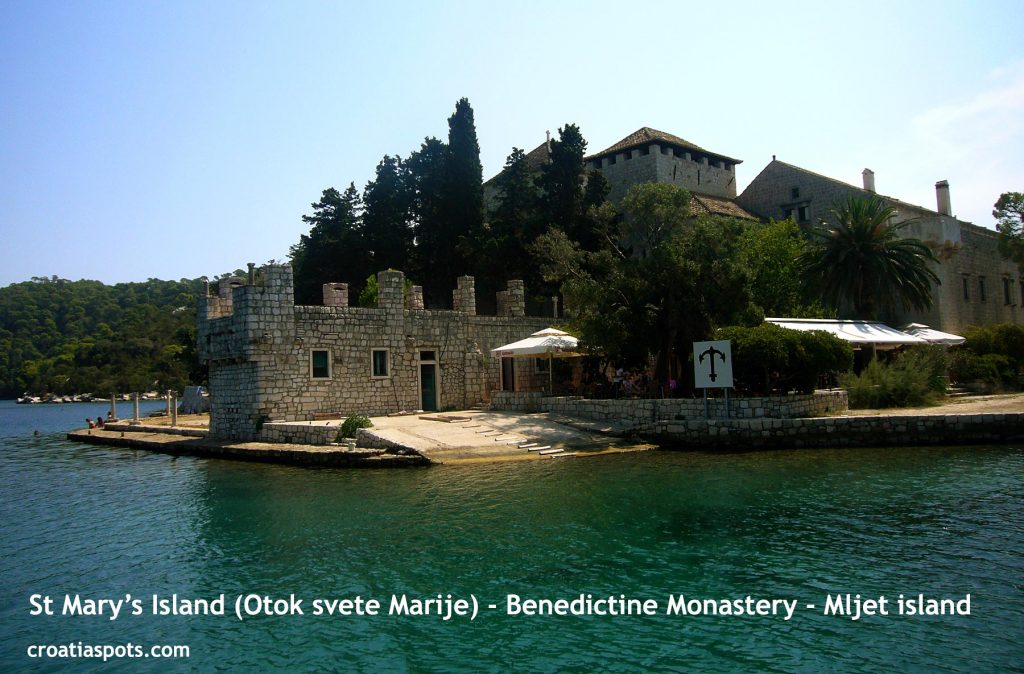
Best Things to do in Mljet
- Visit the two salted lakes, the centrepieces of the whole island
- See the main attraction on the island which is the Benedictine Monastery at St Mary’s Islet in the Large Lake
- Visit Polače village that features unusual ruins of the ancient Roman palace from 5th century AD
- Spend a day on the Saplunara sandy beach
- Hike to the top of the hills to enjoy the views over to Peljesac and Korcula island (see below map)
- check which guided tours are available and what are the latest prices for hiking, diving or kayaking on the island – click here
History
According to legend, Odysseus used the island as a safe haven on his trips among the islands in the Greek archipelagos. Ancient Greeks called the island ‘Melita’ after ‘honey’ and their sailors used the island as a refuge against storms and as a stopover to get fresh water from Blace lakes.
The Romans owned the island from 5 BC and later on, the island was ruled by Byzantine Empire until 1333 when Mljet was granted to Benedictines. In 1410 it becomes a part of Ragusa, the Dubrovnik republic when many of Dubrovnik’s captains build their summer residences along its coast.
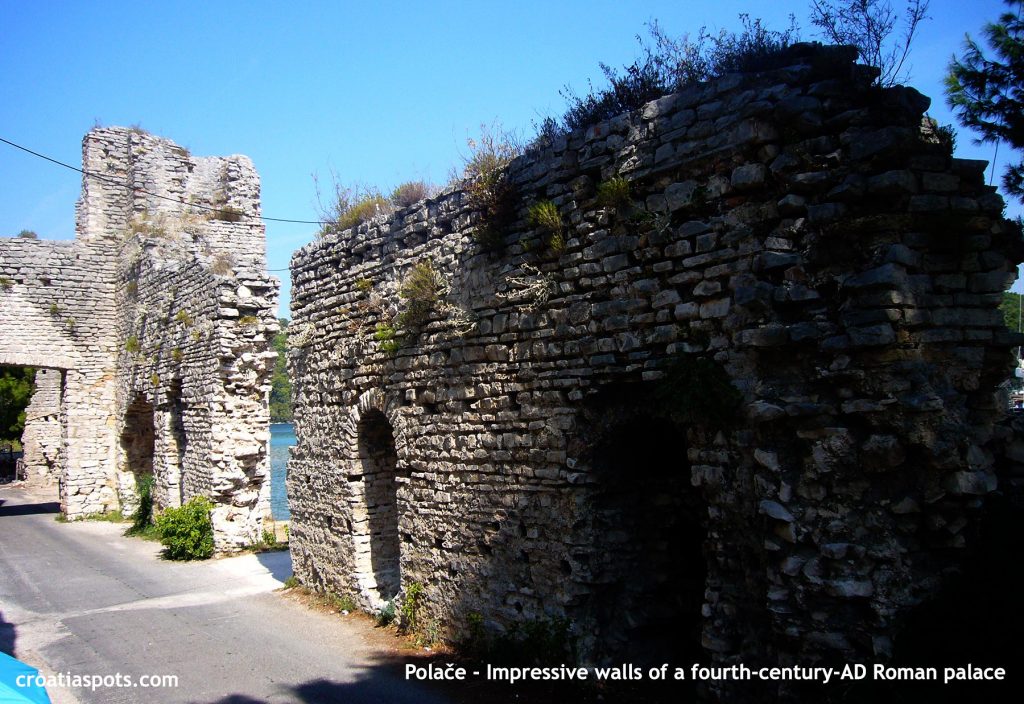
Mljet National Park
Mljet national park was established in 1960 and covers the northwestern part of the island well known for its lush vegetation, large pine forest, and two amazingly scenic saltwater lakes Large and Small Lake (Veliko and Malo Jezero) which are about 4 km long.
The area is an unspoiled oasis of tranquillity that, the lakes are excellent for swimming and snorkeling, with crystal clear water of turquoise color (see photos). This is the most visited part of the island, covered in untouched Mediterranean forest, two lakes, and features two villages – Pomena and Polače and the small hamlet of Babine Kuce right at the edge of the Large Lake.
The entrance to the park is right within the villages where you get an entrance ticket and a map. From the entrance on, you enter into the area where cars are forbidden.
The lakes are encircled by tarmac paths, ideal for walking or cycling where you can choose numerous spots to stop and bath in warm and clear waters, perfect for bathing. Water in these lakes is much warmer than anywhere else along the island’s coast.
Small Lake’s high saline concentration is considered to have some healing properties for rheumatism and skin eczema.
Benedictine Monastery at St Mary’s Islet
The most interesting feature of the park is St Mary’s islet and its 12th-century Benedictine monastery with St Mary’s Church, both encircled by high stone-built walls and guarded by a tall defensive tower. Abandoned in the 19th century by the monks, the monastery nowadays features a nice restaurant, a cafe, and a souvenir shop. Find out more
You get to this atmospheric islet by National Park’s owned, sun-powered (completely silent) boats from Pristaniste spot, which is right next to Mali Most (the connecting stone bridge between Large and Small Lake). The free boat ride is included in your entrance ticket.

Veliko and Malo Jezero
Malo and Veliko Jezero aka Small and Large Lake are the main features of the National Park, the two salt lakes that are part of the National Park. It takes just 15 minutes to walk from Pomena village to the lakes.
From there, take a free boat ride from the Mali Most pier to the corner of Large Lake, where you will see the Otok Svete Marije islet with a church and Benedictine monastery.
Large Lake is connected to the sea by the narrow canal in Soline hamlet. The currents here are pretty strong and can be especially hard to swim during the periods between high and low tide. On the other side of the lake, at Mali Most, the tides create a shallow water slide that people like to swim in. It is a shallow spot, fun to play with.
Mljet For Families With Kids

Kids will definitely love Mljet especially the National Park bit. There are no cars here, just bicycles and kayaks. Small Lake is an ideal beach for children where they can slide on the tide that runs between two lakes. Another great place for children is Saplunara sandy beach, where they can easily get into the water, play with the sand, build sandcastles and interact with other children. You will find in both spots a basic cafe, ice cream kiosk, and candy shop to keep kids entertained.
Beaches
There are plenty of places to swim and sunbathe on the island. Read more details in a separate article that covers the beaches on the island and see the map below:
Best hikes/walks
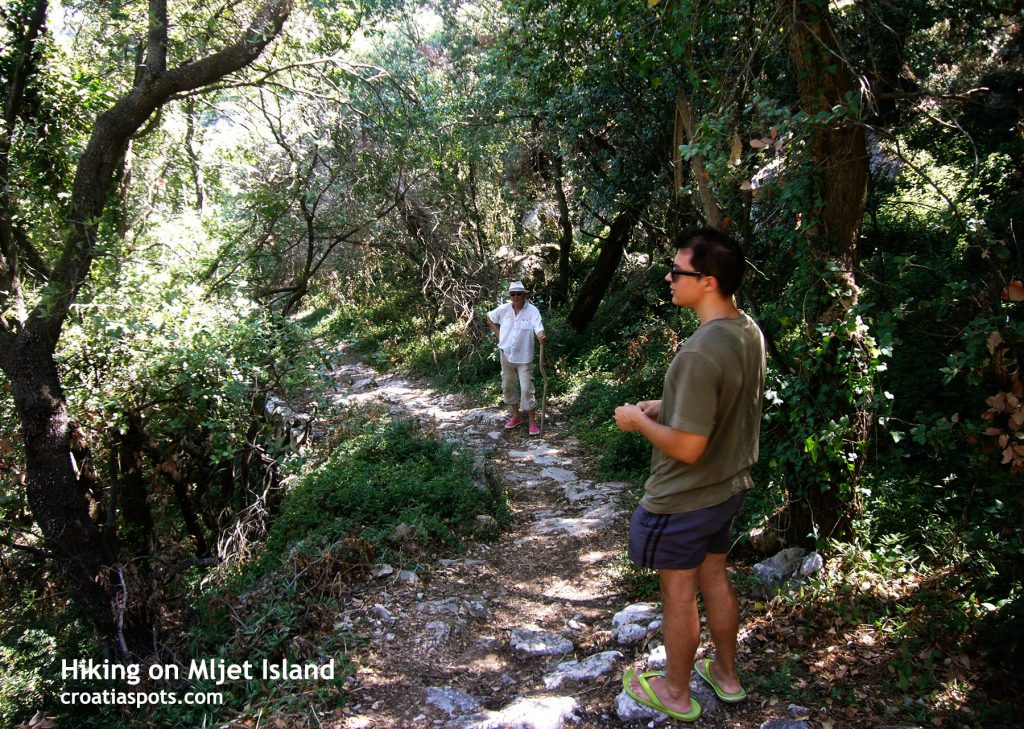
The highest peak on the island is Velji Grad, 513 meters. There are numerous hiking/walking trails along the whole island so if you are visiting in hiking season (not July or August, when the weather is very hot) you will have plenty of trails to choose from.
The trails are well marked. Some are suitable for beginners, such as the ones that lead along both lakes. Part of these trails are shaded by pine trees and other vegetation (see above photo). Make sure you have enough water with you at any time of the year.
It is very likely you will see mongooses on your way. They were imported here from the far east to deal with snakes that were overtaking the island at the time. Nowadays, there are no snakes, just mongooses crossing forest paths.
If you’re staying in or near Polače village, you can walk over to the Large Lake by a well-signed forest path that leads via the Montokuc hill (245 m) in about 50 minutes. From the top of the hill, you will get amazing views over the Park. You can buy a hiking map in the small shop in Pomena or Polače when you get your entrance ticket.
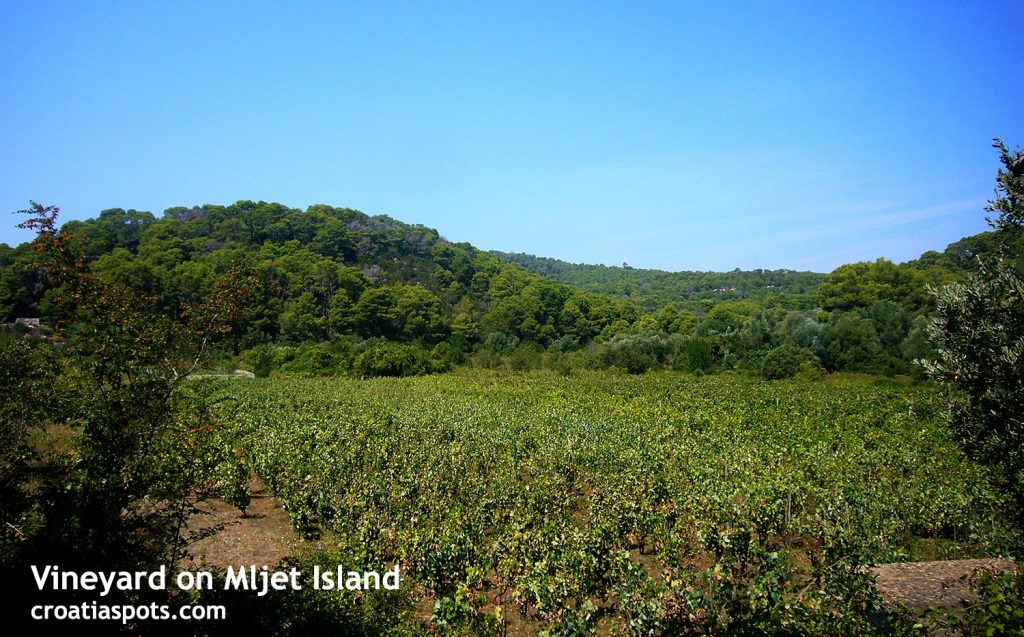
Cycling and Kayaking
There is a popular tarmac cycling path around Large Lake. You can rent a bike on several spots within the Park and this is a great and handy way to explore the Lakes any time of the year. The cycling path is partly shaded by tall trees which make it easy to cycle even if it’s very hot.
You can also rent kayaks to explore Large Lake, St Mary’s islet, and Monastery. They can also be rented at the same spots where you get your bicycle – at Mali Most bridge.
Diving
if you are into scuba diving, get in touch with aquatica-mljet.hr the company that does diving trips on the island. They are located in Pomena village and can get you to diving spots that include some shipwrecks from WW2 and antique Roman wreck that features amphorae and other ceramics from the time. On the south side of the island, you can dive into a couple of deep walls too. Here is a video:
Where to Stay
Mljet has numerous private rooms and apartments available to rent. Most of them have a terrace or a private balcony with sea views. If you are staying in any of the seaside villages, any location should be good as from most of the houses you will have a sea-views from at least one room. There is just one hotel on the island, Hotel Odisej in Pomena.
When to Make Your Reservations
If you are after booking the best places to stay, make your reservation as soon as you can. That particularly applies to July and August when is the busiest part of the year. For the rest of the year, it is less busy, but you should still book your accommodation in advance. For the best hotel prices and to check what is currently available check here.
Getting to Mljet and Day trips
By Ferry
- For foot passengers – take all year round daily fast ferry from Dubrovnik.
- Car ferries to the island are departing from Prapratno on Peljesac.
- April to October – daily fast ferries from Split, Brac, Hvar, Korcula and Dubrovnik.
- From Lastovo, in July and August, twice a week, a fast ferry catamaran.
- From Vis Island several options. See detailed schedules and ferry ticket prices info on the croatiaferries.com website
- by private tours from Dubrovnik, Peljesac and Korcula – see what is available
Directions Map
On the above map, you can see the locations of Mljet ferry ports as an entry point to the island. See also a map of all Croatian islands including Mljet.
More info

- about Dubrovnik
- other Croatians islands
- For hotel bookings check here
- playlist of Mljet videos
Discover More
Island Hopping from Šibenik
Plitvice Lakes Tickets, Entrance, Opening Hours and Parking
Island Mljet
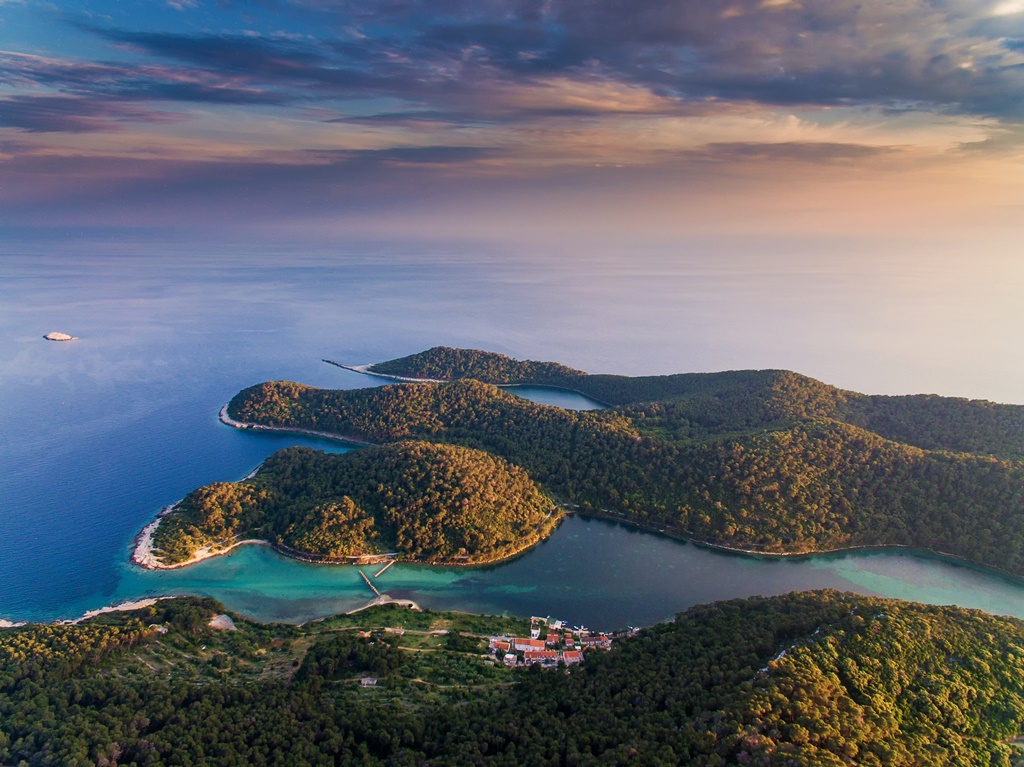
Mljet island is one of the larger islands you will find in the southeastern part of the Adriatic coast. It is the greenest island in Croatia and Mljet National Park covers big part of it. Mljet is one of the few islands that preserved its natural beauty and authenticity, still attracting numerous tourists looking for a holiday in a relaxing atmosphere.
Mljet Weather
Mljet is known for its wine, olives and cheese, all thanks to the mild Mediterranean climate. The average temperature during the summer is around 24°C and 9°C during the winter period. The rain is very rare during the summer months, as in other Adriatic islands, it is mostly expected from October to April. Besides that, the island is known for its National Park of which the most popular spots are two salted lakes, Veliko and Malo jezero.
If you plan to visit Mljet, this guide will give you all the necessary information regarding the island, its beaches and campsites, nightlife, travel information and, of course, a detailed list of things to do during your stay.
Table of Contents
Ferry to Mljet
Mljet has more than one port, but there is only one ferry car port situated in Sobra. The other ports are Polača and Pomena where the catamarans operate. Ports are well connected to Dubrovnik and Split on the mainland as well as with other islands on the relation between those two cities.
Sobra port
The only car ferry terminal of Sobra is situated in a little island town of Sobra. This is the main port of the island and the place where all the ferries arrive. The Mljet port authority is located there, as well. Sobra is well connected to the other parts of the island with regular bus lines as well as with the national park of Mljet. Read more about Sobra port here.
List of ferry and catamaran routes to and from Sobra
Car ferry: Prapratno (Pelješac)-Sobra
Catamaran: Dubrovnik-Luka Šipanska-Sobra (Mljet)-Polače (Mljet)-Korčula-Ubli (Lastovo)
Polače port
Polače is a village on the northwest side of the island of Mljet in part of the national park of Mljet. It’s located in a wide bay surrounded by four little islands, that’s why it’s considered one of the safest ports of the Adriatic, located right in the center of the village. Read more about Polače port here.
List of catamaran routes to and from Polače:
Catamaran: Dubrovnik-Luka-Šipanska-Sobra (Mljet)-Polače (Mljet)-Korčula-Ubli (Lastovo)
- Polače – Dubrovnik
- Polače – Luka Šipanska
- Polače – Sobra
- Polače – Korčula
- Polače – Ubli
Pomena port
Pomena is a small village at the west end of Mljet, it is very close to the entrance of National Park Mljet being only 20 minutes in walking distance from Malo Jezero. As Polače, it is considered a very safe harbor for anchorage, especially because it is protected by a tiny island Pomestak.
It takes around 3 hours to get from Split to Pomena and it goes across the islands, and from Mljet goes to Dubrovnik. There is only one departure per day, but this could be a great option for island hopping.
Getting to Mljet from Dubrovnik and Split airport
→If you land in Dubrovnik airport you need about 20 minutes from exiting the terminal to get to where the catamaran departures, to get a ticket you should be in the port 30 minutes before departure.
→In case you land in Split airport, you can take a shuttle bus that takes you directly to the Split ferry port, it will take you around 30 minutes (maybe a bit more during the summer period because of the traffic).
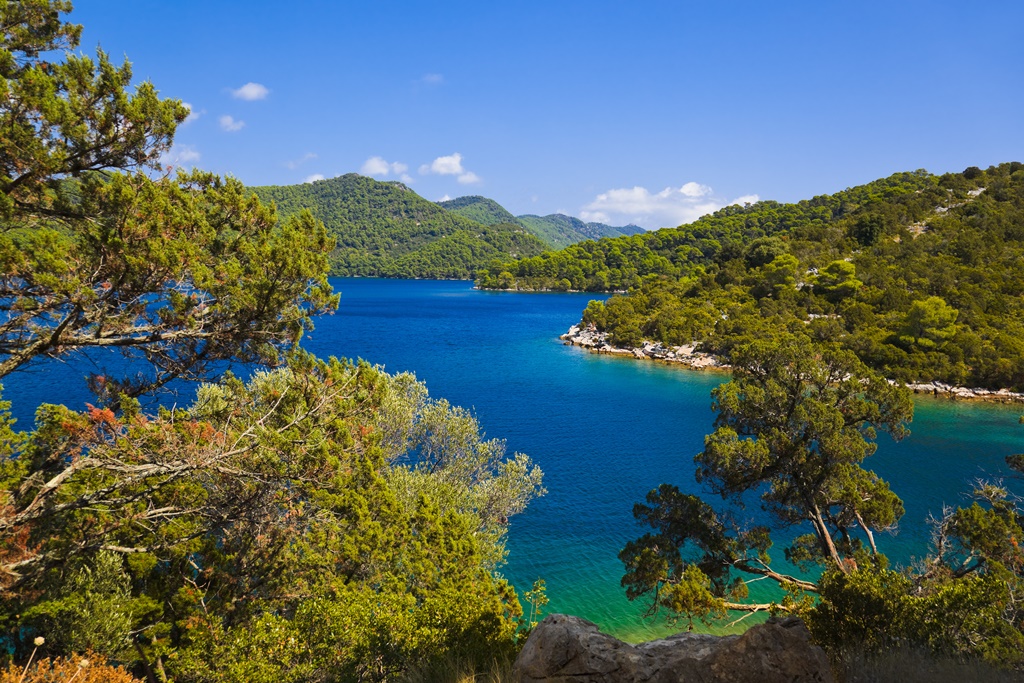
Getting around the island
On Mljet island there are two bus lines operated by Libertas Dubrovnik:
→Bus line 18 operates the Western side of the island from Pomena to Sobra and passes through Govedari, Pristaniste, Polace, Blato and Babino Polje, the whole journey takes 20 minutes.
→Bus line 19 operates the Eastern side of Mljet, it goes from Saplunara to Sobra via Maranovici and Pozura, the whole journey takes a bit less than an hour.
You can check the current timetable HERE. For all other information regarding the public transport on Mljet check the official website.
Apart from using the island buses, you can always rent a car or a scooter to drive around the island and explore all the towns and villages, hidden bays and coves that are the true gems of every island. There are several companies offering this service, most of them can be found close to the National Park.
For those that are interested in hiking and cycling, it is possible to rent a bike and explore the island in a more adventurous way.
There is also an option of using a taxi service which is available to/from any Mljet port. When you arrive to the port, you will probably get to see a few taxis waiting for the passengers in front of the terminal. The price which you can expect to pay between Sobra and Polace can reach 300 HRK (40 €).
Getting around the National Park
To get to the National Park Mljet you can use some of the aforementioned means of transport. To get around the NP there is the option of renting a kayak or a rowing boat. Another option is a minibus service which can take you from Polace to Pristaniste. To get to the St. Mary islet (Sveta Marija) you have to take a minibus from Mali Most. You can check the timetable here.
Historical sights
National Park Mljet – This is one of the largest national parks in southern Dalmatia and a big attraction of the country. It covers a big part of the island and its most attractive sights are Malo and Veliko jezero and villages of Govedari, Polace and Pomena. There are many activities on offer in this NP such as walking, cycling, swimming, scuba diving, canoeing and kayaking. The entrance fee is 125 HRK for adults in the peak season (June – October) and 70 HRK in the rest of the year. You can check the prices for 2021 here. Also, for more information about the park check here.
St. Mary’s Island – The biggest attraction of the national park is definitely Veliko jezero with its St. Mary’s island (Sveta Marija). There lies a 400 years old Benedictine monastery and when you get done with sightseeing, there is a cafe where you can relax. Also, if you’re up for some activity, you can swim and snorkel here. The boat goes to the island every hour and it is included in the entrance ticket.
Roman Palace – This impressive fortified construction is located in Polače and dates back to around the 5th century. As the name reveals it, it is a sign of early Roman presence in this area, as well as in the rest of Dalmatia. Besides the palace, there are other ruins scattered around which you can explore.
Odysseus Cave – This natural phenomenon is the most attractive cave on Mljet and the reason for that is firstly the legend of Odysseus who is said to be trapped here after surviving a shipwreck. Well, one cave on Malta bears the same story, probably because of the names. The cave can be entered from the sea by boat, only under good weather conditions, and if you find yourself in the cave around noon, that is when you will get a chance to see the amazing spectrum of colors created by the sun.
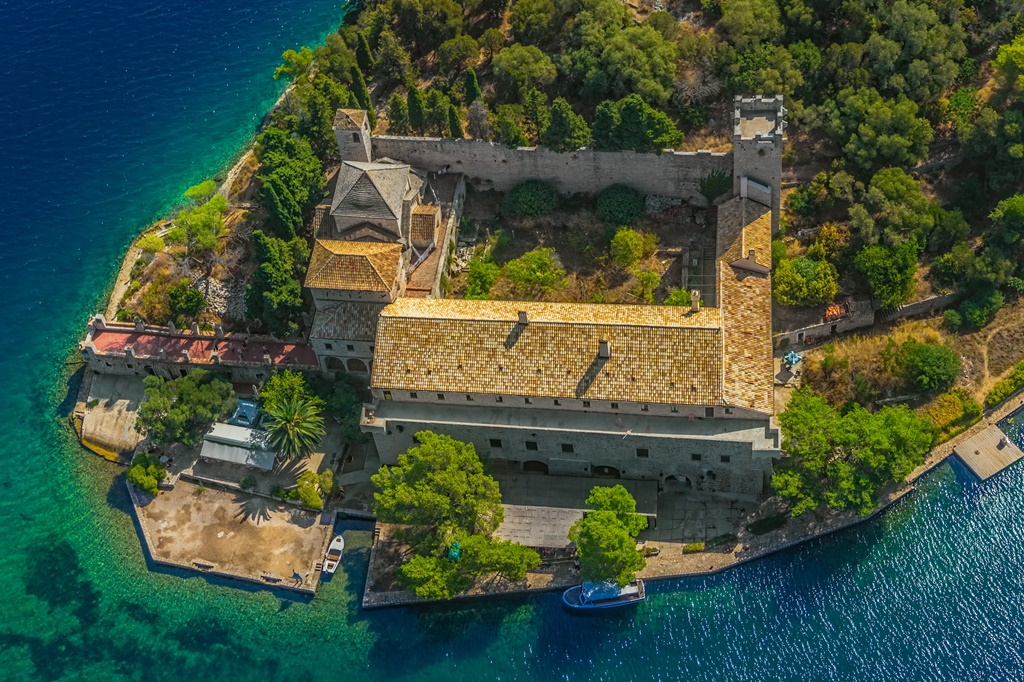
Top beaches on Mljet island
On Mljet island, you will find a lot of gorgeous bays and many beaches of which most of them are pebble ones. Being one of the most rural Croatian islands, the beaches are authentic with a lot of vegetation and a crystal clear sea. Besides beaches, the shores of Veliko and Malo jezero are also popular spots during the summer and the lakes can reach the same high temperatures as the sea. Anyway, we picked our favorite beaches on Mljet:
Saplunara – This is the sandy beach located on the southeast end of Mljet and its name means ‘sand’ in Latin. It is divided into two beaches, Mala and Velika Saplunara (large and small one) and although very beautiful, there are no big crowds since there are no many residents in the area either. As you can already guess, you won’t find many activities on this beach, as well as restaurants and shops, just one bar and a toilet. Therefore, this is an ideal beach to enjoy the tranquility of nature which is also considered a protected area. The beach can be easily reached by bus from Sobra or taxi.
Blaca (Limuni) – Just a few minutes away from Saplunara is located another sandy paradise known as Limuni Bay or Blaca. Here, you will also manage to find peace and solitude while the beach is well protected allowing you to swim carelessly. That also means you won’t find many things around so be prepared and bring your own snacks. The beach is surrounded by pine trees which make a perfect shade on hot summer days.
Sutmiholjska – This is a tiny, lovely pebble beach ideal for families with children. It is situated on the southern shore of Mljet and there is no direct public bus route leading to the beach. the only option is to take a bus from Pomena to Sobra, take off in Babino Polje and continue, for example, by taxi. There is a bit of a natural shade on the beach, but mostly in the afternoons when the sun starts to go down. If you’re looking for something around, this beach has a bar, restaurant, a shop and a rental agency. Still, you won’t find any sports activities.
Okuklje – This beach has mostly concrete surface but a lot of good spots for swimming, but still maybe not the best option for families with small children. It has a good natural shade where you can hide from the sun and the entire bay is full of apartment rentals so it can be a good place to stay at. Also, you will find several restaurants and shops in the area.
Regarding the National park Mljet, there are two pebble beaches on Mali Most and Polace, while there is also a concrete ‘beach’ in front of the hotel which is also very popular. The rest of the shore in the National Park is rocky but there are many accessible spots.
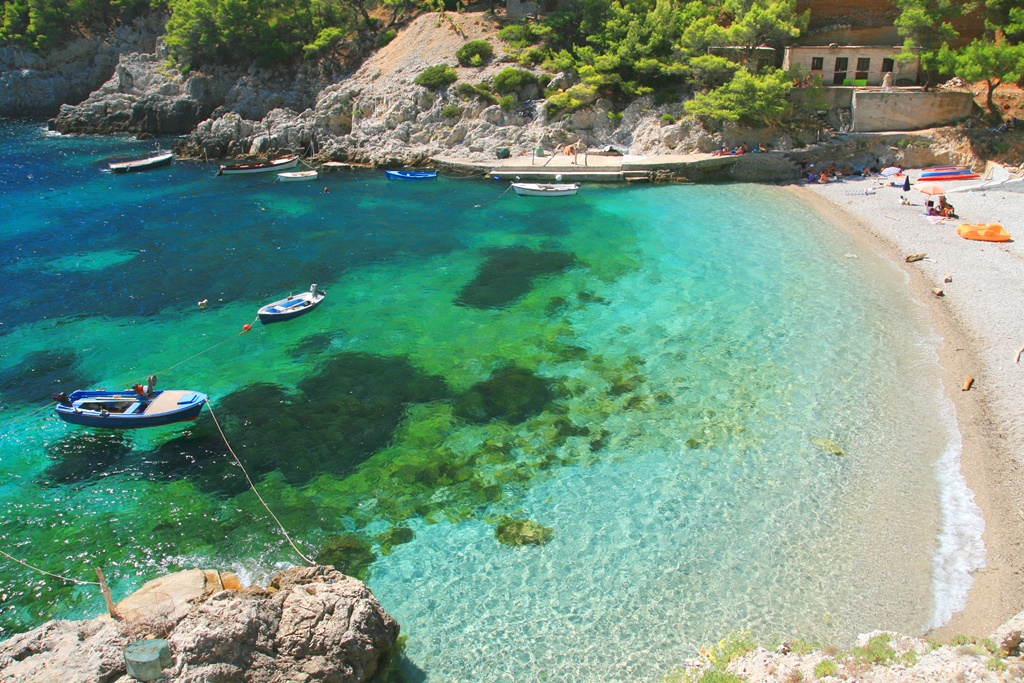
Camping on Mljet
Many people enjoy spending their vacation in nature, lying in the shade of pine trees listening to the sound of waves and crickets. It really is a peaceful and unique experience, especially if you are spending your summer vacation on a Mediterranean island surrounded by beaches of crystal clear sea and you can get the best of it if you decide to spend your vacation camping instead of booking a hotel room.
On Mljet island, there are three campsites at the moment. Campsite Marina is a small one located in Babino Polje, you can get any info you want by sending them a direct message. A bit bigger camping ground runned by a family is Lovor, located in Kozarica, a very peaceful spot providing a lot of natural shade, equipped with reception, electrical connections, sanitary facilities, hot water and parking. Insurance is also included, contact them for more info. The largest of these three is campsite Mungos, also located in Babino Polje, it has a good capacity, washrooms and showers and many facilities around such as restaurant, exchange office, store, etc., contact them for more info.
Mljet hiking trails
Mljet has many good trails where you can walk and hike, but there is a trail of 43 km which can be split into 4 main routes.
There are no venomous snakes on the island but still, make sure you do not disturb any and bring the proper hiking equipment so that you can enjoy nature to the fullest. Summer is not the ideal period for hiking due to high temperatures but long days still allow you to take a walk in the evening.
- Pomena – Govedari: the route starts in Pomena all the way to Govedari, all within the National park, passing the bays of Liskovje, Stupa, Bijela, Zaklopatica and Rogac. The route lasts around 5 hours.
- Govedari – Blato: The route starts in Govedari which is still within the National Park and continues outside the park to Blato, the route lasts around 7 hours.
- Blato – Babino Polje: The route starts in Blato which is basically the center of the island, passes through Rogovici, all the way to Babino polje. The route lasts around 6 hours.
- Babino Polje – Sobra: The route starts in Babino polje, across Veliki Grad which is the highest point on Mljet, to Sobra bay. The route lasts around 6 hours.
Mljet cycling trails
Mljet is great for cycling and it offers both macadam and asphalted roads passing through towns and villages. As mentioned in the section about hiking trails, the same road od 43 km can be used for cycling, the highest peak is Veliki Grad (513 m). The route can be divided into smaller ones and you can combine them as you wish. Besides the main road, there are also some macadam roads perfect for mountain biking.
In the area of National park Mljet you will easily find the routes, they are all marked and intended for cycling and hiking only. If you’re not carrying your bike with you on Mljet, you can rent it, and there are several renting companies within the park.
When you go cycling, make sure you are well equipped and have enough time dedicated to the activity. Cycling can be done throughout the whole year, but Mljet is very hot during the summer months, so cycling can be very exhausting if done when the sun is up. Always bring water with you!
Snorkeling and diving on Mljet
Since Mljet is the greenest Croatian island and a National Park, it is highly protected, so all water sports and activities are limited and controlled, as expected. Snorkeling on the Mljet’s coast is very popular, but maybe even more attractive is snorkeling on Malo and Veliko jezero in the park. The underwater life of both is lush and diverse.
Besides the lakes, the most popular spots for scuba diving on Mljet are Rikavica, a cave whose name means ‘’roaring’’ because of the waves strongly crashing and producing the roaring sound and Odysseus Cave, with the water so clear that lets you perfectly explore the underwater life, also, there are some great rock walls surrounding the cave from where you can jump.
Snorkeling doesn’t require that much preparation and physical shape nor the theoretical and practical knowledge important for scuba diving. Snorkeling equipment can be rented at the beach or from many different rental agencies in towns/camps, or you can even buy it from the stores/stands in the main towns.
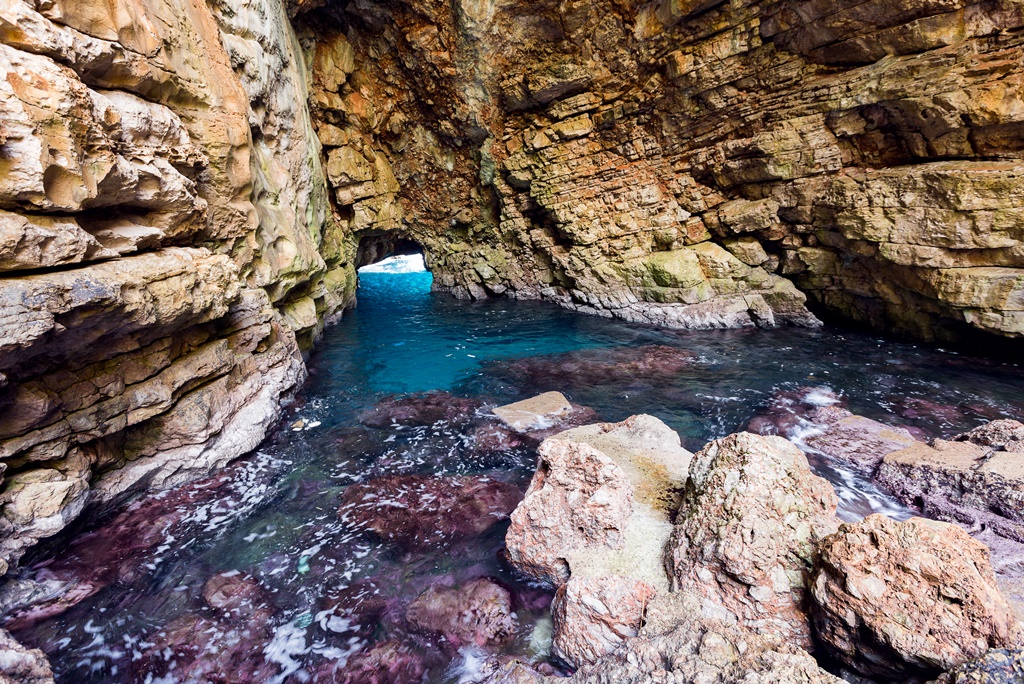
Mljet nightlife
Mljet is not a popular party destination, moreover, it is not a type of island where you can find word-recognized nightlife, it is more of a tranquil and relaxing summer destination. Still, that doesn’t mean you can’t have a great night out while staying on the island.
Although most of the beaches in bigger places have cafes and bars where you can enjoy a good night with your friends while sipping a drink, there are two which most tourists and locals consider being the most popular places to go out. Komarac (Mosquito) is located in Babino Polje, serving coffee during the day, it gets louder and wilder at night, the best place you will find on the island. The other one is Hippocampus, it is more like a beach bar offering a bit more relaxing type of nights out, but still great for hanging out with your friends.
Besides the bars, Mljet has various events such as concerts and cultural events, but the best way is to check that online before your travel.
Food and supplies
On Mljet island you can easily find grocery stores, bakeries, pastry shops, pharmacies and another kind of small shops, so you can buy anything you want right there on spot without bringing anything from the mainland.
In Pomena, there is a small ‘’Studenac’’ store right on the left when you get from the ferry, there you can find anything regarding food, including fresh fruits and vegetables, for cooking in your apartment. It is open daily from 7 am to 7 pm. Just a few meters away is an entrance to the National Park Mljet. In the park you won’t find any shop, just souvenirs, so make sure you buy all the necessities before you enter. Two well-equipped ‘’Tommy’’ markets can be found in Babino Polje, also ‘’Tisak’’ where you can easily send/receive packages etc.
There are also numerous restaurants around the island and you can always eat outside. As for the local food, you should definitely try some of the fish specialties, like grilled fish or scampi, “black” risotto with squids, octopus with potatoes baked under the lid on an open fire… Dalmatian cuisine is a Mediterranean style cuisine which is similar to the Italian one, so you will find a lot of olive oil and herbs like rosemary and sage, garlic and tomatoes in almost every sauce, a lot of vegetables and fruit, etc.
Some of the local specialties we recommend you to try are makaruli, homemade macaroni with premium goat cheese, an eel prepared in several ways such as baked under the lid, in a sauce called brodet etc., and prandispanj, a traditional cake in Dubrovnik, but also on Mljet island.
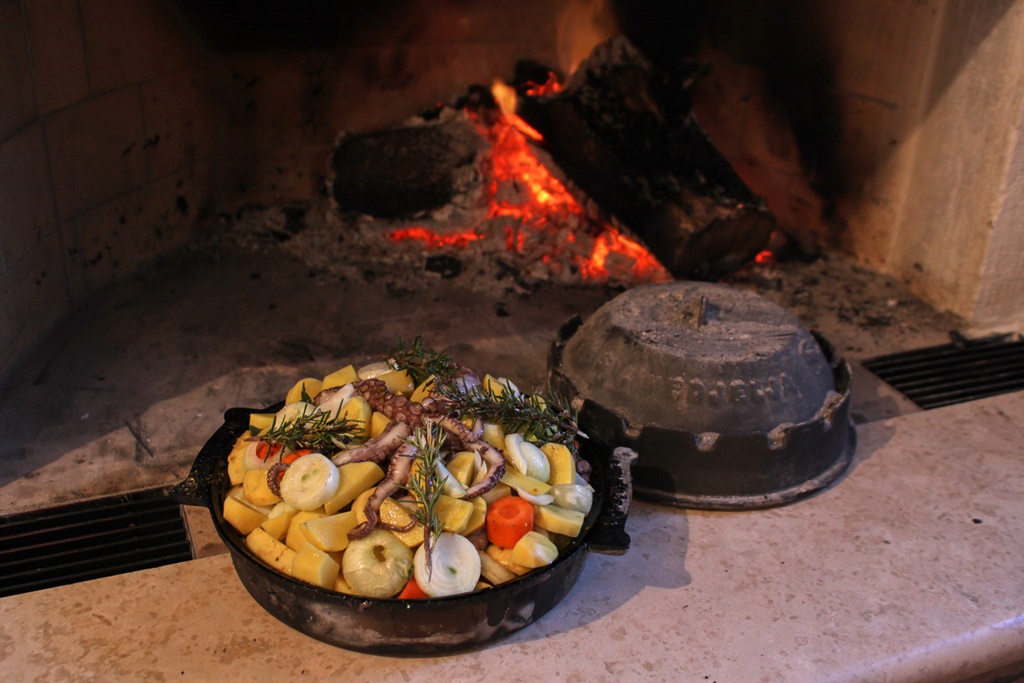
ATMs and exchange offices
Remember that the official currency in Croatia is Kuna and most of the places accept Kuna only. In large tourist places, especially on the coast, it is acceptable to pay in euros or credit cards. However, make sure you always have a local currency with you and some cash because not every restaurant, bar, or market accepts credit cards. Still, larger supermarkets and pharmacies, usually accept them but in case you need something from the bakery, mini markets or newspaper stand, always bring cash. All hotels should accept all major credit cards.
Bargaining in the open-air markets may save you a few kuna, but that is not a common thing to do in this area, so expect to pay the fixed prices.
ATMs can be found from three different banks – OTP banka, Privredna banka and Euro Bancomat. Most of them can be found in Pomena and Polace, also in Hotel Odisej and ferry port Sobra. There are post offices in Babino Polje and Govedari where you can also exchange currencies but have in mind they only work in the mornings till noon, from Monday to Friday. There is also one i Maranovici which opens only during the summer period.
Emergency contact info
In case of an emergency, or if you require immediate assistance of any kind – medical or police assistance, fire department, mountain rescue services, you can call the toll-free number 112 from any location in Croatia (the calls can be made via landlines, cell phones or phone booths) at any time of day or night.
If by any chance, you need to seek medical assistance while you’re on Mljet island, there are ambulances in Babino Polje and Govedari:
- Clinic, Babino Polje: +385 20 641 550
- Clinic, Govedari: +385 20 744 060
If you need to contact the police, you can call the universal Croatian number 192. The police station on Mljet is located in Babino Polje.
Should you need a pharmacy, there is one in Babino Polje, Zabrježe 94, +385 20 745 158
For all tourist information, you can consult tourist boards on Mljet island is in Babino Polje, Zabrježe 2, TZ Mljet
If the situation requires further urgent assistance or hospitalization that cannot be provided on the island, a speedboat or helicopter will be sent for the patient and take them to the nearest hospitals in Dubrovnik or Split.
Foreign citizens/tourists coming from countries that are signatories of the Health Care Convention don’t have to pay for medical assistance in Croatia, while patients coming from countries that are not signatories of this convention, must pay for medical assistance provided, according to the valid tariffs.
Map of Mljet
FAQ – Island Mljet
Can I bring my bicycle on the catamaran or ferry?
It is possible to bring a bicycle on a car ferry, but you need to buy a separate ticket for it. On the other hand, bringing a bicycle on a catamaran is in most cases forbidden as there is simply no space. In case you are traveling off-season, the boat crew might let you bring it if there are no many passengers.
Can I buy/reserve a ticket for a specific departure?
In the case of the catamaran, you can buy a ticket for a specific departure, but for the car ferry you can buy a ticket for a specific travel date, but not for a specific departure.
Can I make a day trip to Mljet from Split or Dubrovnik?
Dubrovnik is the closest bigger city on the mainland, so it is possible to make a day trip, especially during the summer when the lines are more frequent. n the other hand, Split is a bit further away, but it is still possible to make a short day trip during the summer season.
Can I bring my dog on the ferry/catamaran?
On catamarans, you can NOT bring your dog, but on the car ferries you can, but you are not allowed to take them into the closed areas where passengers are sitting.
How much luggage can I bring?
On ferries up to 100 kg, on catamarans up to 20 kg but as the luggage it not weighed, it is normally not an issue if you bring a bit more.
How long should I stay on Mljet island?
You can explore all the mentioned sights in 2-3 days, but if you want to properly relax and discover all the authentic places on the island, take a few more days.
When is the best time to visit Mljet?
The best time is the summer because you can spend your days on the beach, relaxing, swimming and sunbathing. The downside is that the island is packed during the summertime since everyone is visiting then. Although, Mljet is not the most popular destination like some other Croatian islands (Hvar). If you wish to avoid the crowds or you don’t like the heat that much and would like to go to the beach without getting sunburnt, then you should consider the postseason. September is one of the best months; the air temperature is milder and the sea is still quite warm. October is good for hiking and cycling enthusiasts since it is not that hot anymore so you can spend most of the day exploring the island. Plus the prices are not that high anymore. If you are keener to travel in the preseason, then May and early June are good months regarding the air temperature but the sea might still not be that warm for some, with the temperature of about 18-20 degrees.

